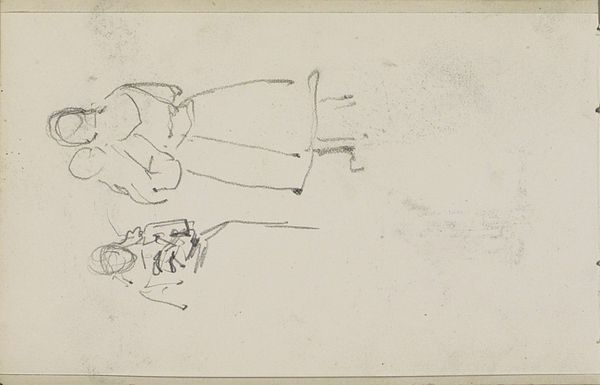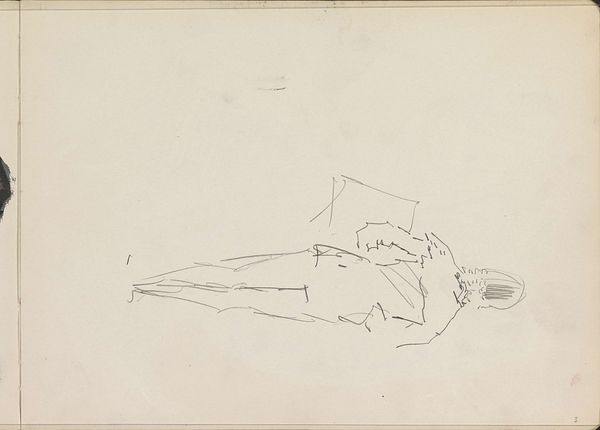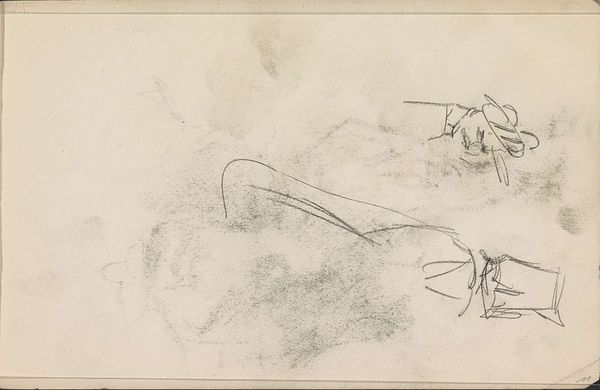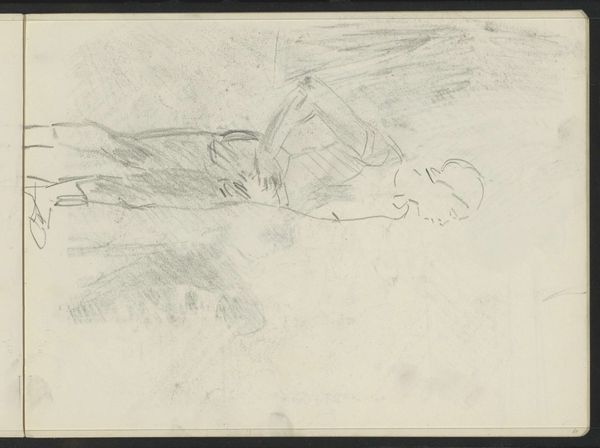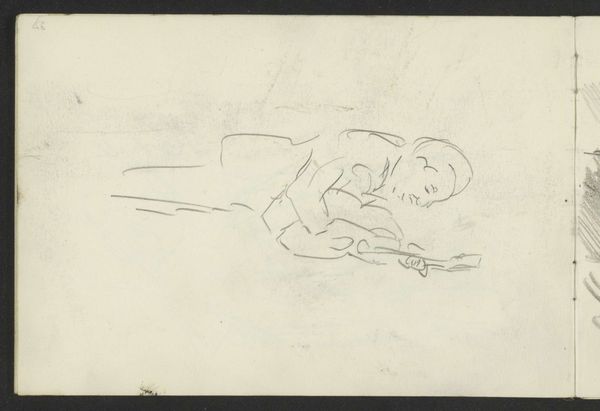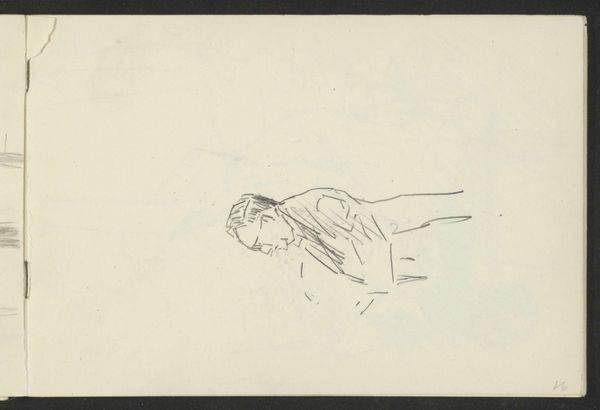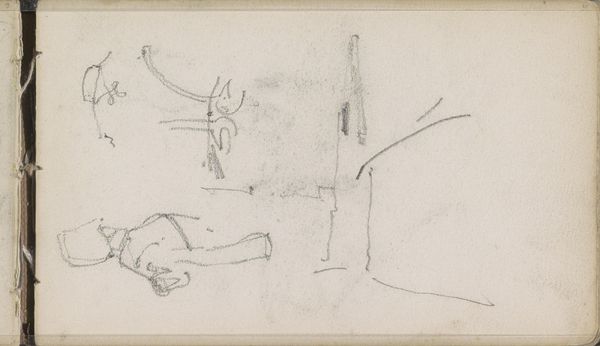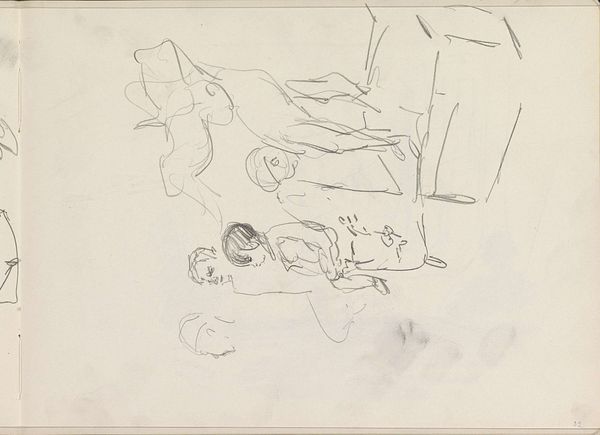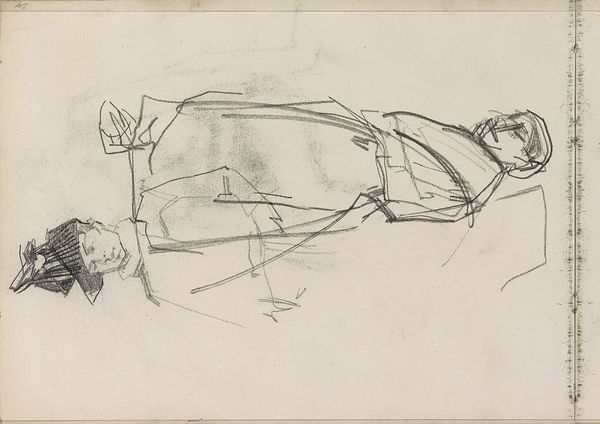
drawing, pencil
#
portrait
#
drawing
#
figuration
#
pencil
Copyright: Rijks Museum: Open Domain
Curator: Looking at this drawing, it almost feels as though we are peering over the artist's shoulder as he captures a fleeting impression. Editor: Indeed. This pencil sketch titled "Staande man, mogelijk in uniform" by Isaac Israels feels remarkably intimate, a quick observation rendered on paper, wouldn't you agree? There is something melancholic and even voyeuristic at play. Curator: Absolutely. Created circa 1915-1925, now part of the Rijksmuseum collection, it presents an intriguing look at the figure. But before we address any deeper meanings, consider that it is created in humble pencil. Think of the labour required and social context for such medium use, even given the potential subject. Editor: And consider also that context – early 20th century, a period marked by significant socio-political upheaval. We should also think about its relation to institutions – the Rijksmuseum holds it and shapes its visibility. The 'uniform' detail alone suggests military presence and the potential anxieties of the period. The title gives an out for definiteness, does it reflect reality? Curator: Precisely. What kind of pencil, what paper was used? It affects how he articulates line, how rapidly he renders this figure, and it’s through materiality we access broader social histories! Editor: Of course! To what extent do contemporary exhibition display methods and art historical accounts serve to enhance or diminish this? Did Israels' intend that the subject wear military uniform, or some similar uniform? How should a modern institution properly contextualize artworks with incomplete context? Curator: I see it, on the one hand, a very subtle social reflection embedded in common materials of art-making, with potential institutional gaps in its provenance! On the other, you focus on how museum settings mediate public understandings. Both vital angles to appreciate art in all its intricacy, its social context. Editor: That is indeed the most vital lesson. To think more consciously of how our values and knowledge shape what art even is! Curator: Precisely. Let's move on to our next selection.
Comments
No comments
Be the first to comment and join the conversation on the ultimate creative platform.
